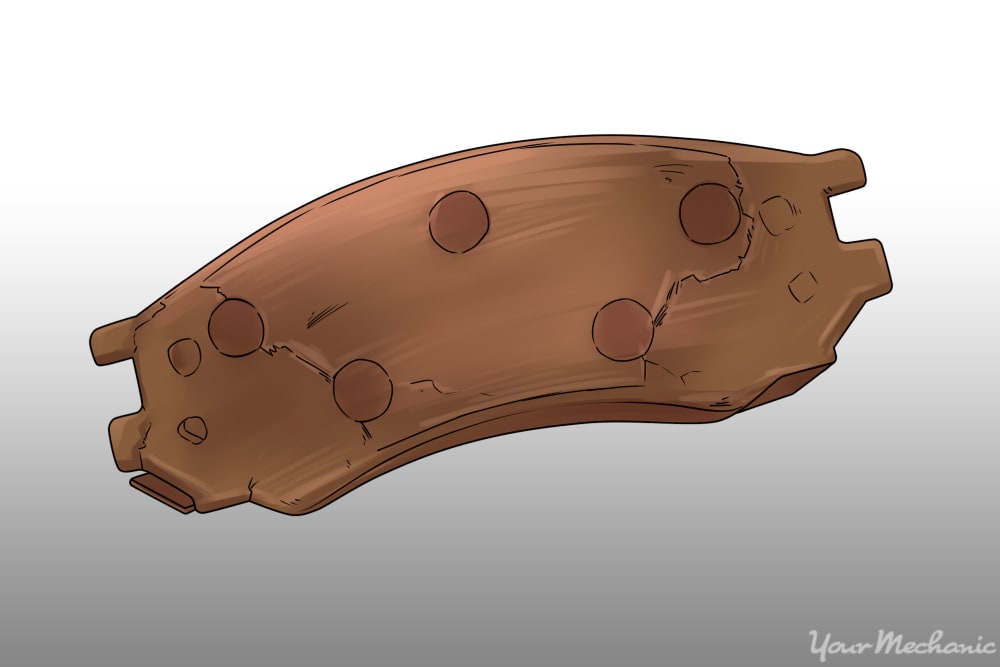

When you press the brake pedal to slow down, multiple individual components and systems work together to stop or slow the vehicle down. Every day, millions of drivers successfully navigate the highways and roadways without problems. However, if the brakes appear to fail, the results can be disastrous and extremely disheartening. This situation is commonly referred to as brake fade, which is a temporary reduction or the full loss of braking power.
Brake fade can be temporary — lasting only a split second in most cases. But those precious moments can mean the difference between a successful stop, or a serious accident. In order to clarify some of the misunderstandings associated with this situation, we’d like to articulate some of the facts about brake fade, what causes it, and what you can do to reduce the potential of this happening to you.
What is Brake Fade?
In order to slow a vehicle down, the brake pad and rotor must create mutual friction in the braking system. If the brakes are applied and this does not occur, it’s referred to as brake fade. When brake fade happens, it results in unexpected or inconsistent braking — typically increasing stopping distance and the likelihood of an accident. Brake fading is commonly caused by the overheating of a brake pad and can happen on cars, trucks, SUVs, and motorcycles. Since brake fade occurs from overheating, it’s usually temporary and the brake system will return to normal function once the brake pads and rotor have cooled down.
What are the Different Types of Brake Fade?
There are two specific types of brake fade common with cars, trucks, and SUVs sold in the US.
Green Fade: The most common type of brake fade is called Green Fade, or early-life brake fade. This situation usually develops when new brake pads and/or brake rotors are installed. When brake pads are replaced, it might take some time to for the new components to ‘settle in’ or properly align. Some mechanics call this period the ‘bedding in’ period. Under normal city driving conditions, it will take 500 miles for brake pads and rotors to properly align.
Dynamic Fade: Dynamic brake fade, or stop brake fade, is more serious and typically due to incorrect or faulty brake pad components. Brake components are unique to every year, make and model. When a brake pad or rotor from a different year, make or model of vehicle is installed on your car, truck or SUV, the potential for dynamic brake fade increases. Dynamic brake fade can also be caused by improper installation — such as the brake caliper being improperly torqued.
Brake Fluid Fade: Brake fluid is part of the brake caliper. The brake caliper heats up as it pushes the brake pads into contact with the brake disc using brake fluid. Both the fluid and the caliper heat up from this process, which causes bubbles to form from boiling if it gets too hot. This reduces the total amount of fluid and prevents full braking power, as air is easier to compress than a liquid. Brake fluid should be replaced as recommended by your vehicle’s service manual — the older the fluid, the more likely it is to boil.
What Can I Do to Reduce Brake Fade Happening?
Brake fade is not a new mechanical anomaly. In fact, it’s been around for quite some time. However, the most common source of brake fade (green fade) could be significantly reduced due to an ‘old-school’ installation procedure. Back in the day, when drum brakes were more common, older mechanics and brake specialists would use some light sandpaper to ‘scuff’ both the brake rotor and brake pad, since both of them usually contained a light protective oil or residue. Taking this proactive measure would help the brake pads and rotors ‘break in’ easier and reduce the potential of green fade.
This isn’t a common installation procedure any longer at most dealerships or brake service centers. Today’s brake pads use quicker-burning lubricants or protective enzymes that can expedite the break-in period.
If you’d like to reduce the potential of experiencing brake fade, follow these four simple tips:
Only use OEM brake replacement components: Using the right brake system components recommended for your specific year, make, and model of vehicle is the best way to reduce the impact of brake fade from your vehicle.
Have a professional mechanic install your brakes: As indicated above, incorrect brake installation is another source of dynamic brake fade. Always have a professional mechanic or brake system specialist replace all brake system components on your vehicle.
Take it easy: All new brake components need time to ‘break in’ so they create friction on a gradual basis. It’s recommended to drive carefully — and avoid excessive or aggressive braking for at least the first 500 miles.
Have a mechanic complete a brake inspection if you experience brake fade: If you’re driving down the street and you experience any brake fade symptoms, attempt to bring the vehicle to a safe stop, wait for at least 10 minutes before attempting to drive again, and slowly test your brakes to ensure they work. If they do, drive home slowly and contact a mechanic to complete a brake system inspection.
Following these simple 4 tips can significantly reduce the potential of brake fade happening to you. As we stated above, if you experience brake fade — contact a professional mechanic quickly for a brake inspection to determine the root source and complete the right repairs.



